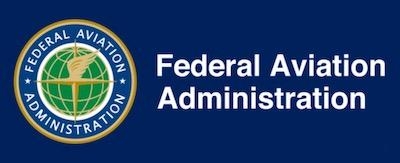LeClairRyan Attorney Mark Dombroff Sees Numerous Challenges And Opportunities In The Coming Year
The pace of change in U.S. aviation will accelerate in the year ahead thanks to passage of the FAA Reauthorization Act of 2018, writes veteran LeClairRyan aviation attorney Mark A. Dombroff in a new column for Airport Business.

Dombroff, an Alexandria, VA-based member of the national law firm and co-leader of its Aviation Industry practice, writes about sweeping changes in three areas in particular: noise mitigation, supersonic aircraft and Unmanned Aerial Systems (UAS). Congress passed the 1,200-page act, a five-year reauthorization, this past September after a series of lengthy delays.
With respect to noise concerns, Dombroff writes, FAA now must consider the feasibility of using dispersal headings to mitigate noise over residential and other sensitive areas whenever proposing new area navigation departure procedures or changing existing procedures below 6,000 feet. "The idea here is to spread flight paths out across the airspace instead of using busy 'highways' in which large numbers of longitudinally separated planes continually fly over the same communities," the attorney explains.
Broadly speaking, FAA's ongoing "NextGen" modernization of the national airspace could translate into a major shakeup in existing noise patterns and intensities, he writes. The reauthorization orders FAA to review its community-involvement practices for NextGen projects located in major metro areas. In addition, lawmakers ordered the agency to review and evaluate what is already known about how jet approach and takeoff speeds affect noise, Dombroff writes, and lawmakers also directed FAA to commission academic research on the health effects of noise.
Wherever possible, airport operators need to have a seat at the table as the aforementioned discussions and studies progress, the attorney advises. "Runways exist in their present directions and locations not just by chance, but because of specific considerations related to physics, weather and aerodynamics," he notes. "The ideal situation, from the perspective of community noise mitigation, is not always viable for airport operators or the FAA to pursue."
The FAA reauthorization also amounts to a major push for a return to supersonic air travel. According to the act, FAA must issue a notice of proposed rulemaking on noise standards for supersonic aircraft by March 31, 2020, and must fast-track the application process for civil supersonic aircraft. In the column, Dombroff describes growth in this sector by the likes of Boom, which aims to start flying 200-person passenger aircraft capable of Mach 2.2 airspeeds by 2023, and Aerion, which is collaborating with GE Aviation and Lockheed Martin on what it bills as the world's first supersonic business jet. "Supersonic aircraft are coming to U.S. airports," Dombroff writes. "From noise standards, to safety and runway considerations, operators need to be part of the process—and the time to start is now."
With respect to drones, the act makes changes related to test sites, waivers and airworthiness; pilot, air carrier and airport certificates; design standards; package delivery; and regulation of "model" aircraft. "Generally speaking, it further integrates drones into U.S. airspace—in part by ordering a federal study on allowing local control of the low-level airspace drones occupy," Dombroff writes.
Over the next year and beyond, the attorney maintains, the industry is likely to see real progress on UAS regulations, possibly including operation beyond the visual line of sight. While this is a potential area of concern for airport operators, they should also consider leveraging the benefits of UAS, Dombroff writes.
"By coordinating with the tower and the FAA, airports stand to use drones safely and effectively for all kinds of tasks—bird control, runway safety inspections, security ops and more," he explains. "Airlines can use UAS to inspect planes in 4K detail, with drones flying over and recording the entire fuselage, or to spot-check hangar roofs and ceilings. Drones will be a part of U.S. airspace sooner rather than later."
Airports, in other words, need to be proactive, not only in terms of safety and security, but also to maximize the efficiency of their own operations. "It all means that U.S. airports will have plenty of items on their to-do lists for 2019," Dombroff concludes.
(Source: LeClairRyan news release)
 Sierra Space Repositions Dream Chaser for First Mission
Sierra Space Repositions Dream Chaser for First Mission ANN's Daily Aero-Term (05.10.24): Takeoff Roll
ANN's Daily Aero-Term (05.10.24): Takeoff Roll Aero-News: Quote of the Day (05.10.24)
Aero-News: Quote of the Day (05.10.24) Aero-News: Quote of the Day (05.11.24)
Aero-News: Quote of the Day (05.11.24) ANN's Daily Aero-Term (05.11.24): IDENT Feature
ANN's Daily Aero-Term (05.11.24): IDENT Feature



